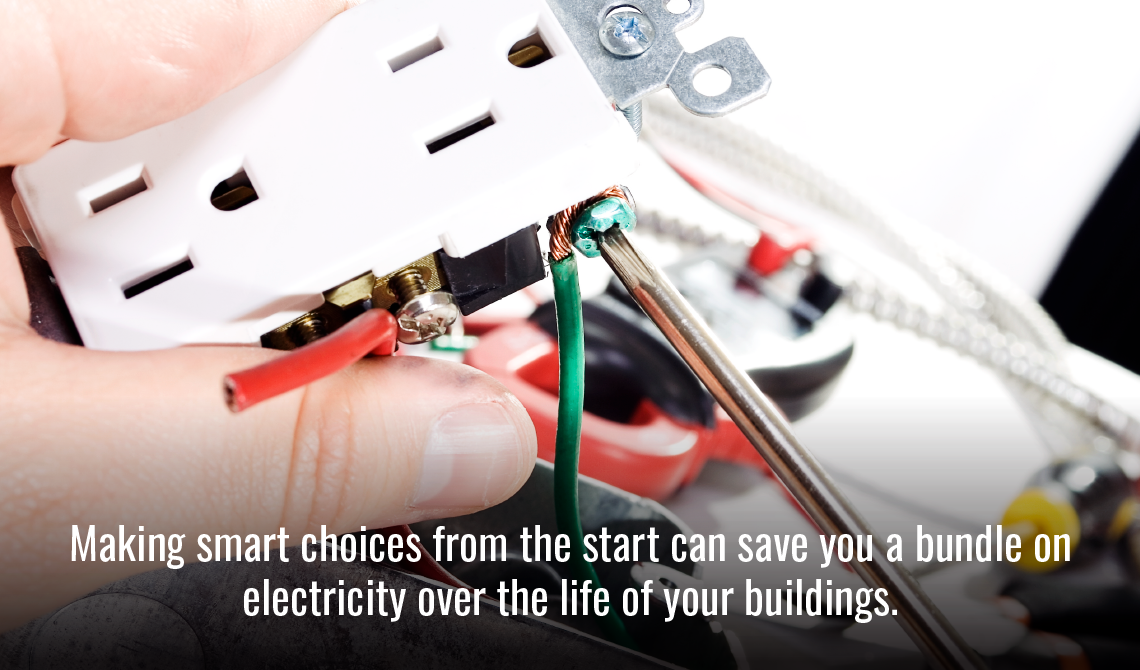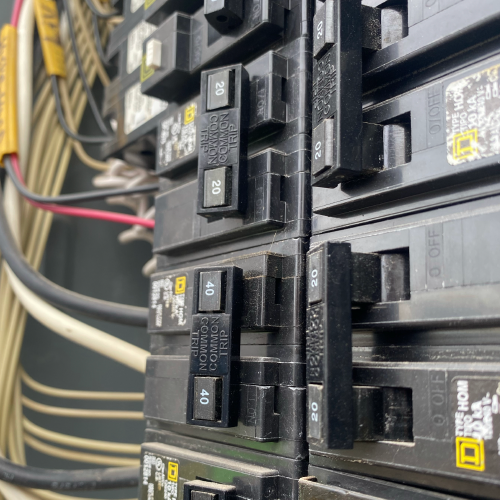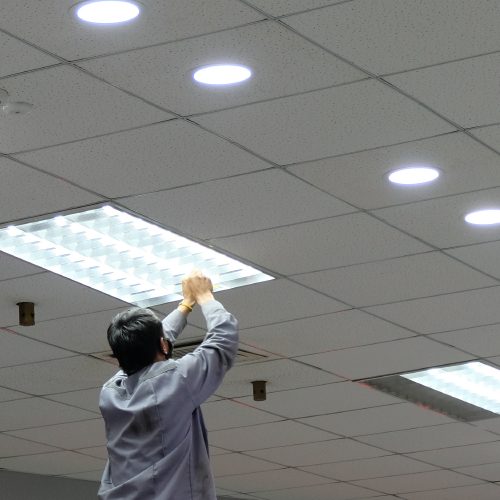
Stough can help you save money by:
Electricity is complicated, so it is best to use a professional who will represent your best interests. Stough can handle all your electrical needs: dedicated space lighting, and sufficient electricity to run your HVAC, computers and other equipment both now and in the future.

1. Choosing quality
The electrician with the lower bid may cut corners in terms of experience, products and/or labor—sending less-qualified people (Apprentices or Journeymen instead of Master Electricians) to install lower-quality products. They also may not send enough people to get the job done in a reasonable amount of time. Common electrical mistakes can be costly and unsafe.
We always use Square D products. Like Stough, Square D is known for quality. They make the best switch gears, subpanels, breaker boxes, etc.
When we are called for an electrical job—whether on new plasma center construction or for an electrical upgrade—we always send a Master Electrician to supervise the work.
Master Electrician is the highest level of electrical certification. To earn it, most states require around 4,000 hours of electric work as a Journeyman, followed by a licensing exam to display in-depth knowledge of the National Electrical Code.
You want to be concerned about quality, avoiding anything that could be hazardous, and accomplishing what you want at the right price.
Stough can handle all your electrical needs, so you don’t have to worry about your electrician getting it right.
Back To Top
2. Thinking about the future when selecting electrical panels and wiring
Many electricians will install an electrical panel that is too small for your future needs.
For example:
Let’s say you need 50 amps right now, but your future needs may go to 150 or higher:
- Most electricians will install a 75-amp main panel, then come back at a future time to add a 75-amp subpanel.
- They may run your wiring based on the 50 amps you are using now, rather than the 150 you may use in the future. It will have to be redone in the future.
- Stough installs a 100-amp main panel with a 100-amp subpanel, keeping 50 amps on the main panel and 100 on the subpanel open for your future needs. We wire for the 150-amp scenario.
Which approach do you think is more cost-effective in the long run?
Back To Top
3. Doing more with less
Energy-efficient systems do not have to cost more, particularly over the life of your buildings. You can find out how well your buildings stack up by setting up an account in the ENERGY STAR Portfolio Manager and benchmarking your structures.
Benchmarking will help you identify cost-effective opportunities and help you verify the results of your efforts.
Click on these checklists of energy-saving measures to see what can be executed at no or low cost, or with quick payback.
The measures include:
- Lighting
- Operations and maintenance
- Energy-efficient products
- Energy-saving competitions
- Building upgrades
- Water, waste and renewable energy
We would be happy to work with you to determine how you can save energy throughout your new or existing operation.
Back To TopSTOUGH CAN HANDLE YOUR ELECTRICAL NEEDS TO MAKE SURE YOUR SYSTEMS ARE ENERGY-EFFICIENT AND WILL SERVE YOU WELL OVER THE LONG-TERM
Reach Us
To streamline delivery and control costs, we take a prototype approach when possible, engage local civil engineering consultants for each project, and establish a working relationship with the local governing authority.